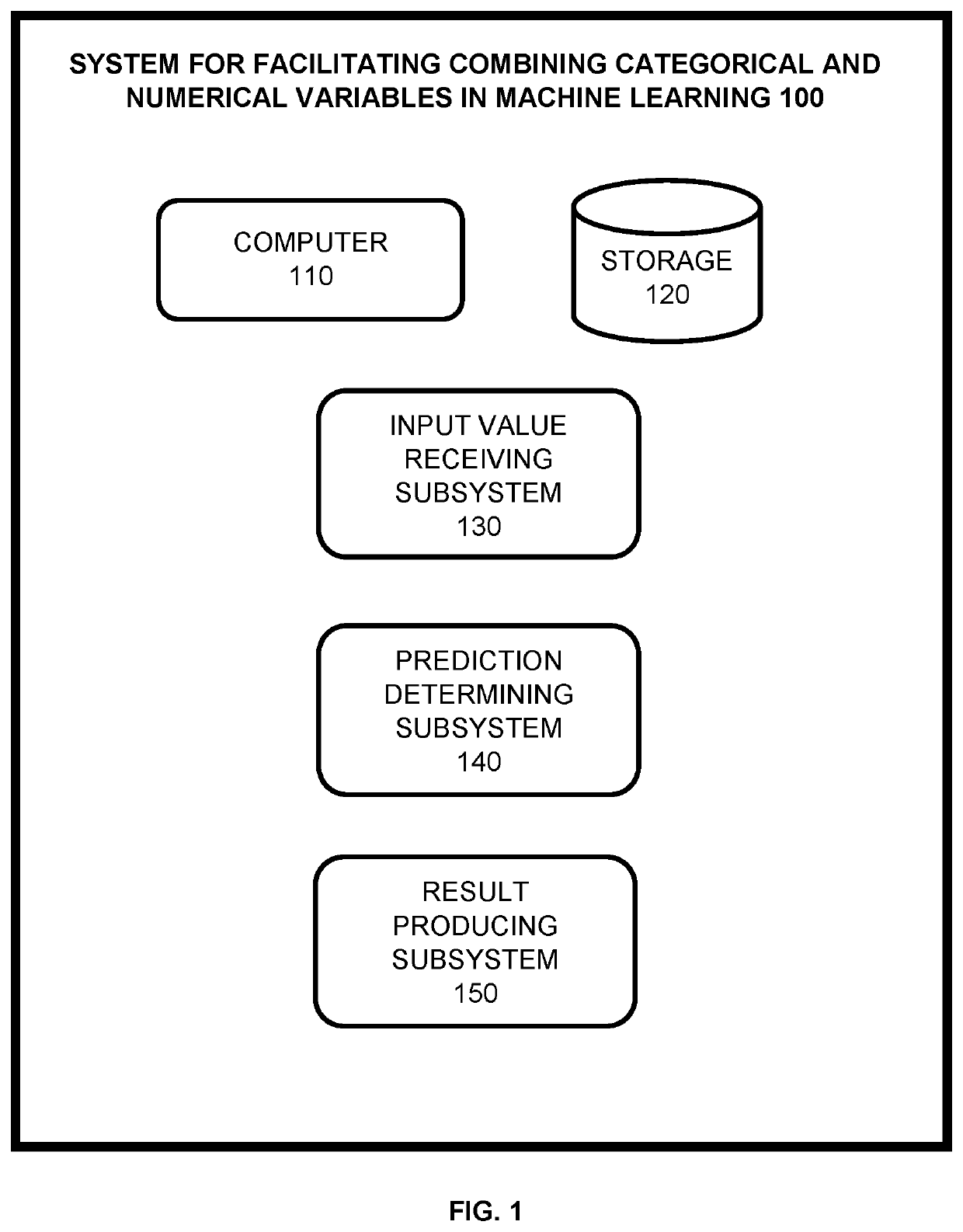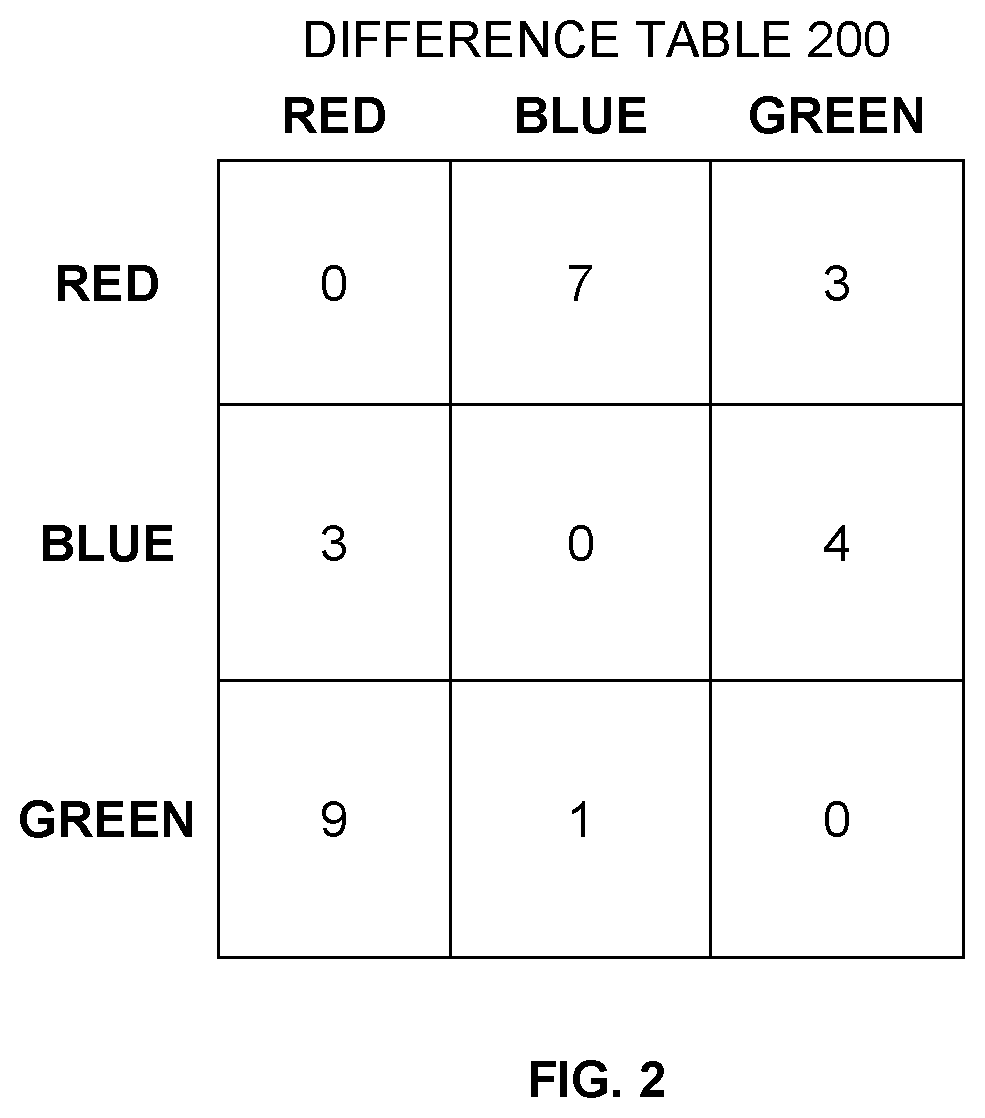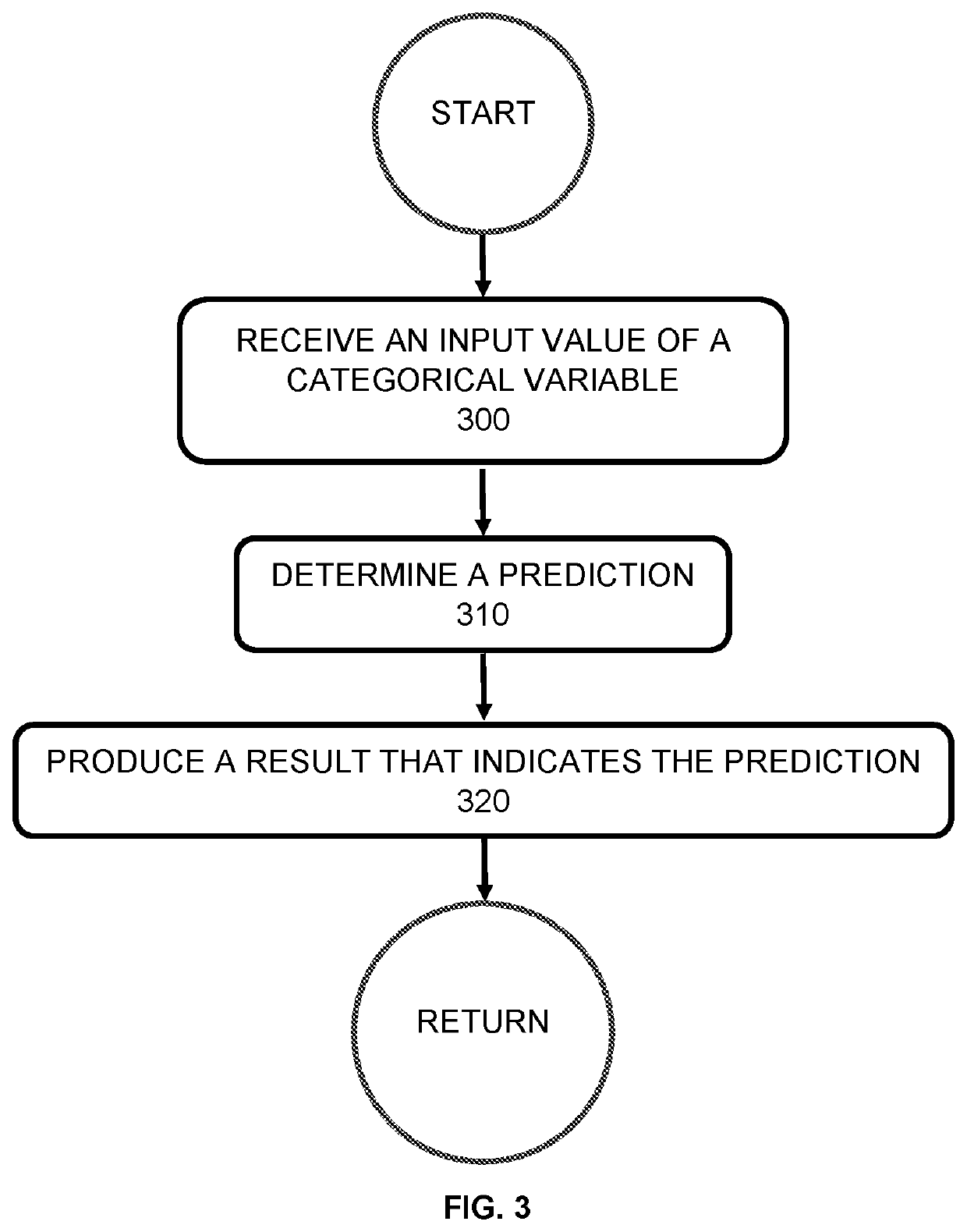Method and system for facilitating combining categorical and numerical variables in machine learning
a machine learning and numerical variable technology, applied in the field of machine learning, can solve the problems of inability to know the machine learning system, methods suffer from several shortcomings, and simple encoding suffers from the same problems as one-hot encoding, and achieve the effect of facilitating prediction
- Summary
- Abstract
- Description
- Claims
- Application Information
AI Technical Summary
Benefits of technology
Problems solved by technology
Method used
Image
Examples
Embodiment Construction
[0027]Embodiments of the subject matter can be used to predict a target that can be categorical (classification) or numerical (regression). For simplicity of presentation, we will denote a variable—whether categorical or numerical—by a corresponding index i rather than by a name. Also for simplicity of presentation, we will denote a categorical variable value by a corresponding index j. This method of denoting variables and categorical variable values is merely a notational convenience and does not affect embodiments of the subject matter. Other equivalent notational methods can be used.
[0028]In embodiments of the subject matter, classification involves determining g(x,b,i):
g(x,b,i)=argmin{s(x,b,i,j)1≤j≤m(i)}s(x,b,i,j)=(x-μb,i,j)TΣb,i,j-1(x-μb,i,j)+lnΣb,i,j1-lnpi,j
[0029]Here, i is the category index for classification, x is a column vector of values, b is a corresponding vector of variable indices of those values in x, m(i) is the number of values for category i, argmin returns that...
PUM
 Login to View More
Login to View More Abstract
Description
Claims
Application Information
 Login to View More
Login to View More - R&D
- Intellectual Property
- Life Sciences
- Materials
- Tech Scout
- Unparalleled Data Quality
- Higher Quality Content
- 60% Fewer Hallucinations
Browse by: Latest US Patents, China's latest patents, Technical Efficacy Thesaurus, Application Domain, Technology Topic, Popular Technical Reports.
© 2025 PatSnap. All rights reserved.Legal|Privacy policy|Modern Slavery Act Transparency Statement|Sitemap|About US| Contact US: help@patsnap.com



